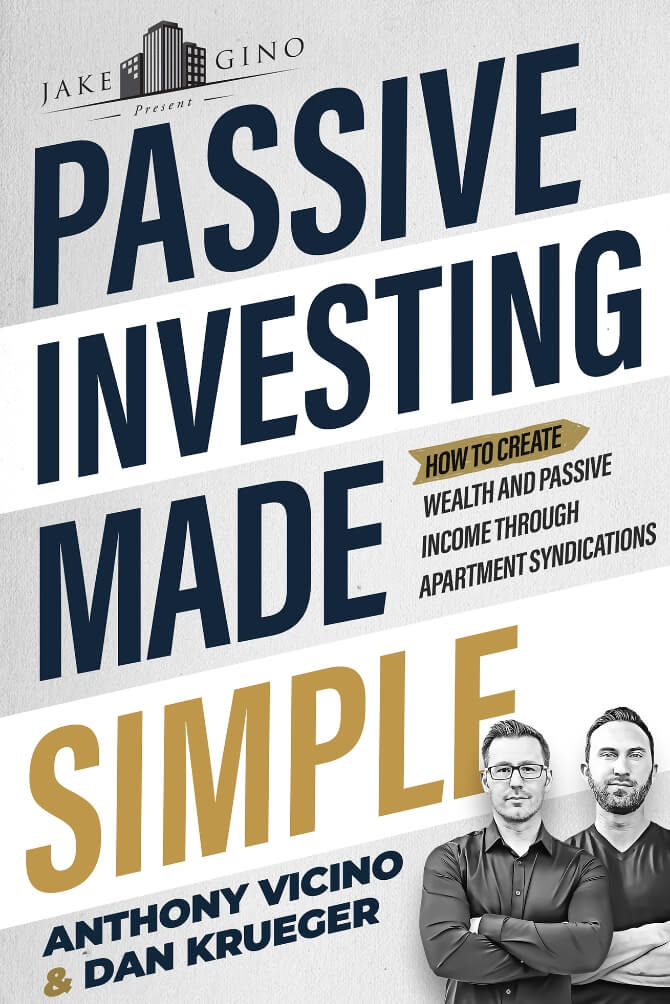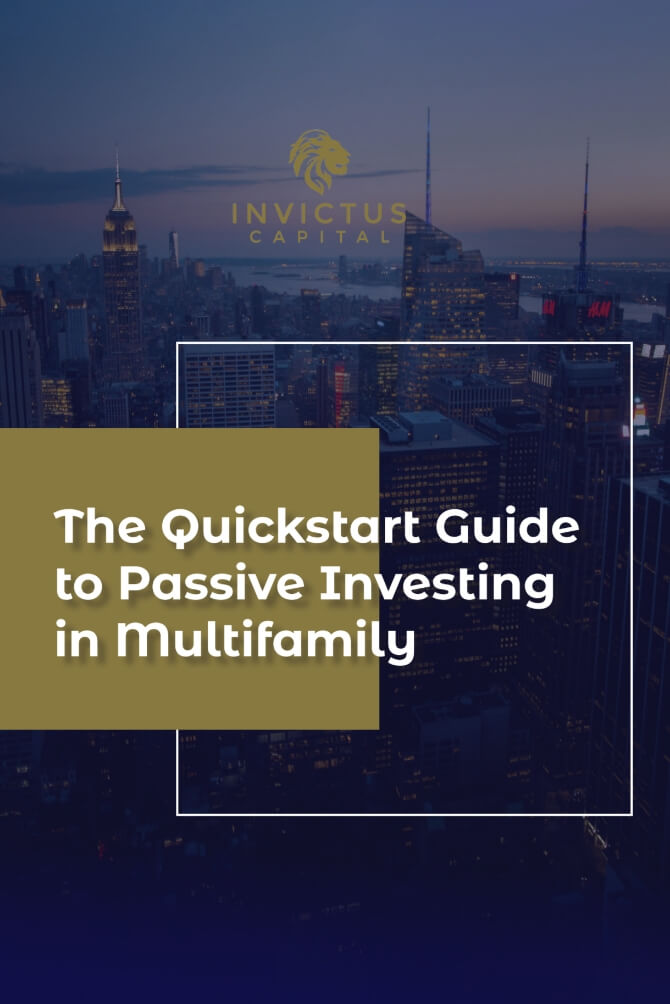For today’s episode, we will be discussing Property Class.
Should we assume A-Class is always better?
What class is prioritized when there’s a preferred return?
Dan and I will also discuss some facts about Property Class that you don’t want to miss.
We will talk about these things…and more in another episode of Multifamily Investing Made Simple in under 10 minutes.
Tweetable Quotes:
“You want to be mindful of what these different asset classes, what they tend to lend themselves for in terms of your investment parameters.” – Anthony Vicino
“The unicorn deal that we’re looking for is like the great neighborhood with a C property that could be easily a B property, but you’re already in a B or in a neighborhood like that’s kind of the perfect storm of different components coming together to set you up really well.” – Dan Krueger
LEAVE A REVIEW if you liked this episode!!
Keep up with the podcast! Follow us on Apple, Stitcher, Google, and other podcast streaming platforms.
To learn more, visit us at https://invictusmultifamily.com/
**Want to learn more about investing with us?**
We’d love to learn more about you and your investment goals. Please fill out this form and let’s schedule a call: https://invictusmultifamily.com/contact/
**Let’s Connect On Social Media!**
LinkedIn: https://www.linkedin.com/company/11681388/admin/
Facebook: https://www.facebook.com/invictuscapitalventures/
YouTube: https://bit.ly/2Lc0ctX

Anthony Vicino: [00:00:15] Hello and welcome to multifamily investing made simple in under 10 minutes, this is the podcast where we take the complexity out of real estate investing so that you can start taking action today. And today we’re going to be doing that in under 10 minutes.
Anthony Vicino: [00:00:28] And the topic of today’s discussion is property class. So, Dan, what is property class?
Dan Krueger: [00:00:35] It’s subjective. That’s what it is. This is why this is a good topic, I think because you’re going to be hearing these terms used quite a bit if you’re shopping around for a real estate deal and these terms are a class B, Class C class, and D class. And basically, as Anthony alluded to, those are classes of multifamily properties. You’re probably assuming that A is better and you know that you know that that’s somewhat accurate. It would be the newest, most amenities, rich in the hottest neighborhood, newest types of properties. The nicer stuff, the top end of the price point spectrum B class would be, you know, just a little bit down from there, either a little bit outside of the hottest area, maybe a first-year suburb. That’s still a brand new build, or maybe it’s in the hottest of the hot areas, but it’s 10, maybe 15 years old, has some amenities, but it’s not the nicest thing on the block, but still good. See class, you know, that’s often referred to as workforce housing, kind of middle price point lower on the amenities side of things, usually builds the kind of turn of the century classic brownstones or kind of mid-century, 50, 60, 70, maybe in the 80s. Once you get to the 90s, I think it’s safe to say you’re into the B class type stuff and then D pretty much the hood. But the important thing to note about these terms is that they’re very subjective. Depending on who you’re talking to, someone might refer to a property as a C class. Someone else might refer to it as a B minus. It could be kind of subjective and a little bit confusing. So I think this is a good topic for us to dive into.
Anthony Vicino: [00:02:12] Mm-hmm. Yes. And you want to be mindful of what these different asset classes, what they tend to lend themselves for in terms of your investment parameters. So a class A property is going to be better generally from just a cash flow and a capital preservation perspective. There’s not usually a ton of appreciation because these are really new buildings. They’re expensive to build. They’re fresh out of the gate. They’re already at the top of the market. And so the investors that are going into these are typically looking for a really safe, stable asset that isn’t going to have wild ups and downs. And so you’re just going in there getting the cash flow yield. And that’s, you know, that could be a solid amount of cash flow, but you’re probably not going to get the most bang for your buck. These are also going to be the new development deals. So when you see cranes in the sky or you see, you know, construction happening, chances are they’re building class A buildings, not class C buildings, class D buildings. And that means if you’re an investor going into a new development deal, there’s generally more risk associated with that because the timelines are so much longer and there’s no cash flow in the early years.
Anthony Vicino: [00:03:16] And so you generally see a little bit higher returns there. Then you can contrast that with, say, Class C and Class B buildings, which lend themselves really well for value add projects, which is the type of thing that we’d like to do most because we go into these assets are a little bit older there, maybe a little bit run down. We can spruce them up, we can add some value to them, and get that forced appreciation while simultaneously getting cash flow. And so for us, it’s the Goldilocks zone. We get the cash flow at the appreciation. It’s the best of all worlds. And then in class D, you might find some operators calling it value add when you get down to the class D, but I would just call that pure opportunistic like they are. They are looking for some really big rewards and they’re willing to take on some really big risks in exchange for it.
Dan Krueger: [00:04:01] Yeah, typically what those individuals are looking for is some gentrification in the neighborhood. They’ll usually go into these properties knowing or hoping that there’s going to be further development in the area that brings the whole neighborhood up and out of that kind of, you know, higher crime kind of hood category. That’s usually the play with the D class stuff. If you think something’s going to stay a crummy neighborhood nine times out of ten, that that flies right in the face of any thesis that a value add D class operator is looking for. So usually those guys are saying, OK, this neighborhood has a lot of opportunity zones, meaning there’s sort of sections of land that have been identified to be treated very favorably from a tax perspective for new investment. If you see those kinds of things, you know, it’s more of a speculative play. Typically, the cap rates are going to be higher, which implies that the returns would be higher. But really, that’s kind of washed up by all the extra work that goes into those types of properties. So as Anthony mentioned, the Goldilocks zone for us is that C plus B minus range where we still have that forced depreciation component, which reduces a lot of the risk of the deal. We’ve got good cash flow because we’re. Nicely situated in the middle of the market, so when things go good, we have people upgrading into these types of properties and when things go bad, we’ve got the people in the class properties to downgrade into these types of properties. So there’s consistently high demand and you’ve got kind of a middle of the road type of tenant there. So you’re not going to have to deal with the, you know, some of the crime that we deal with in a declasse building. And it’s going to be a much more consistent tenant base than you would get in the class buildings, which, you know, tend to take a hit when things get rough. So that’s.
Anthony Vicino: [00:05:44] Yeah. Entangles. Yeah. I want to go back into the real quickly with the whole subjective nature of the rating classes where you’re going to see this most exacerbated, where you want to be on the lookout, especially if you’re a passive investor, is operators presenting a deal and saying this is a Class C property and it’s a value add deal when in reality it’s a class D property. It’s rough and it’s not what I would call a value add deal. And so you don’t want to get suckered into that type of a deal. For the rest of the subjectivity of the scale, you might see some operators trying to justify paying more for a property saying this is a Class B property. And you look under the hood, you’re like a seems a little bit more class C seems older and more worn down. There’s more deferred maintenance. That’s usually a really big indicator of the class of the property is how much-deferred maintenance is baked into the asset with class. Since they’re brand new, there’s no deferred maintenance with Class B, I would say there’s light deferred maintenance and with class C, there’s going to be a little bit more just generally because the buildings are a little bit older.
Dan Krueger: [00:06:50] Yeah, I think some of the subjective nature of this comes into the fact that the market, the area plays into this class system as well. You might be looking at a building, you know, in a vacuum, ignoring the rest of the neighborhood and just saying, you know, this is a 1960s build. It’s got pretty good bones. The price point is on par with a class C, but then when you zoom out and you look at the rest of the neighborhood, you see that you’re in a war zone and high crime really crummy area. So, yeah, that building may fit the definition of a C class building, but because you’re in a D class neighborhood, if you’re trying to justify the standard C class price points, it might be an uphill battle. So I think some people might take the neighborhood into consideration when they’re raiding a building and some people might not. And that probably plays into some of the discrepancies between various people’s definitions.
Anthony Vicino: [00:07:44] Yeah, I would agree with that. I think as a general rule, it’s always best to have the worst building on the block rather than having the best building on the block. If you have the best building on the block and the rest is kind of rough, then it’s only going to be as good as the weakest link will say. And it’s the weakest link in the neighborhood. While you’re never going to have a class A building in a class neighborhood, but you could have a class D building in a class A neighborhood, and that might be a really killer opportunity.
Dan Krueger: [00:08:15] Yeah, I think that’s kind of the unicorn deal that we’re looking for is like the great neighborhood with a C property that could be easily a B property, but you’re already in a B or in a neighborhood like that’s kind of the perfect storm of different components coming together to set you up really well. It’s almost like just lobbing softball. Like here. All you have to do is fix this building up. The rest of the neighborhoods are already gentrified and fantastic. All you have to do is focus on this one little thing and you’re golden. So it’s tough to find those. But when you do find those, those are those.
Anthony Vicino: [00:08:47] That’s going to be a good deal. Yeah. And like they say, you know, real estate is all about location, location, location, and real estate is hyper-local. Yeah.
Anthony Vicino: [00:08:55] You need to know about the MSA in the macroeconomy associated with the larger city. But you also need to know the block by block dynamics because that’s really where real estate plays out on the practical level.
Anthony Vicino: [00:09:06] So that’s going to do it for us on property classes. It’s not. I would say the most important topic that you need to understand is a passive investment, but it’s a really helpful one as you’re getting deals and sponsors. So hopefully that helps. And we’ll catch you guys next week.


